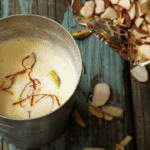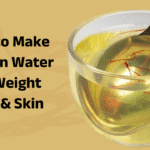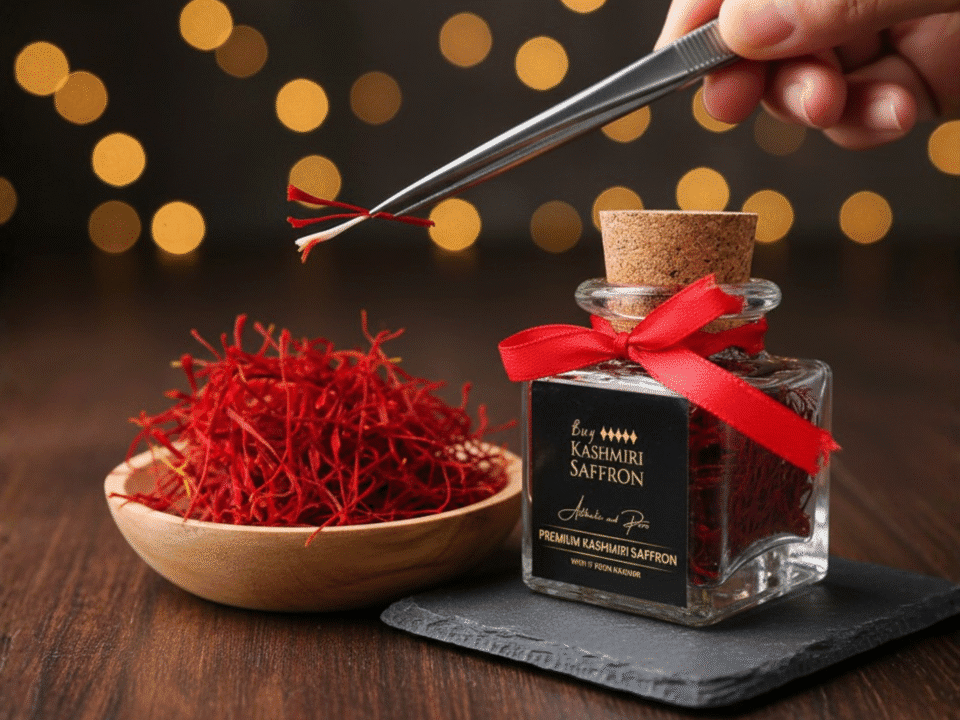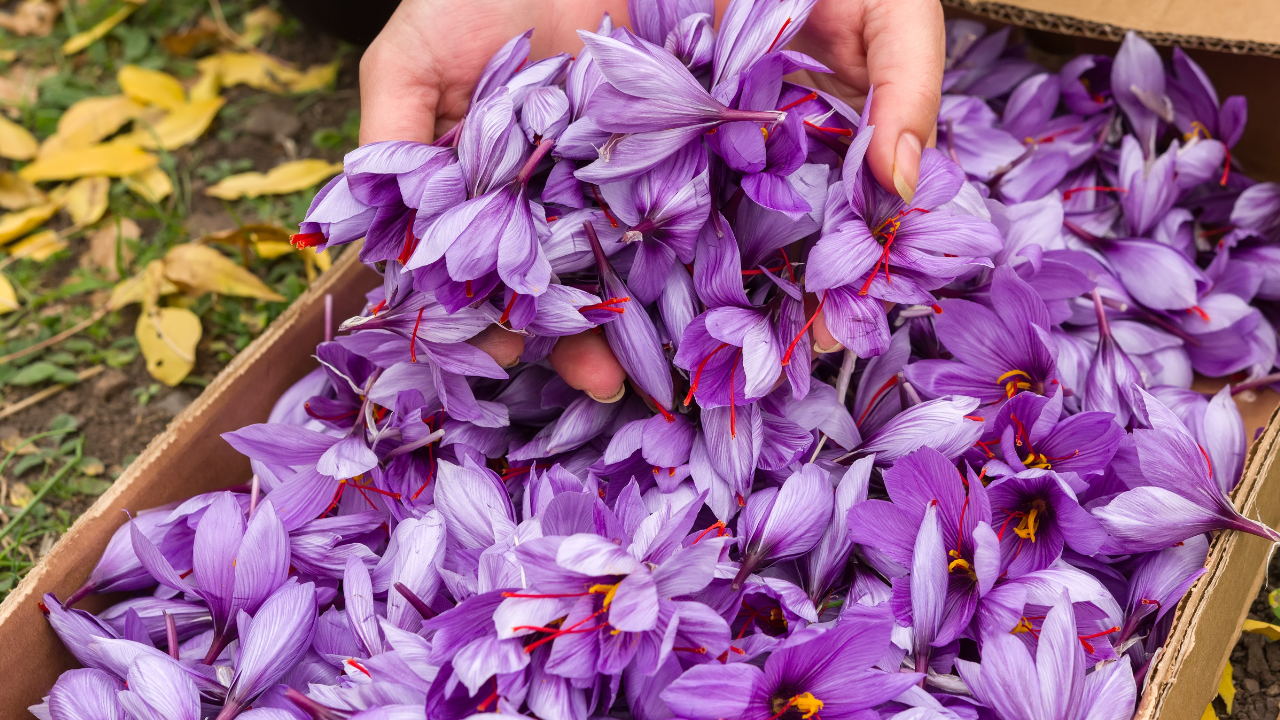
How to Make Saffron Milk at Home: 7 Easy Recipes for Health & Beauty (2025)
August 15, 2025
Saffron Water Benefits: How to Make Saffron Water for Weight Loss & Skin (2025)
August 15, 2025Kashmiri Saffron vs Iranian Saffron is a debate that has intrigued saffron connoisseurs for centuries. While both regions produce exceptional saffron, understanding the key differences in quality, aroma, and potency can help you make an informed choice. This comprehensive comparison reveals why Kashmiri saffron commands premium prices and how to identify authentic products from both origins.
Table of Contents
Kashmiri Saffron Overview
Kashmiri saffron, cultivated in the pristine valleys of Kashmir at altitudes between 1,600 to 2,400 meters above sea level, represents the pinnacle of saffron quality. The region’s unique microclimate, characterized by cold winters, moderate summers, and well-drained soil rich in organic matter, creates ideal growing conditions for premium saffron production.
The cultivation process in Kashmir follows traditional methods passed down through generations. Farmers carefully hand-pick the delicate saffron flowers during the brief harvesting window in October and November. Each flower produces only three precious stigmas, requiring approximately 150,000 flowers to yield just one kilogram of dried saffron.
Kashmiri Saffron Characteristics
- Colour: Deep red-orange with distinctive purple tinge
- Aroma: Intense, complex floral fragrance with honey notes
- Flavour: Rich, warm, slightly sweet with subtle bitterness
- Thread Length: Long, unbroken stigmas (2-3 cm)
- Crocin Content: 8-12% (highest in the world)
- Moisture Content: Below 8% for optimal preservation
Iranian Saffron Overview
Iran, the world’s largest saffron producer, cultivates saffron across various regions including Khorasan, Fars, and Kerman provinces. Iranian saffron benefits from the country’s arid climate and extensive agricultural expertise developed over millennia. The production process involves both traditional and modern farming techniques, with some regions implementing advanced irrigation and harvesting methods.
Iranian saffron cultivation dates back to ancient Persia, where it was considered a royal spice and used in traditional medicine, cuisine, and religious ceremonies. The country’s saffron industry has evolved significantly, incorporating modern quality control measures while maintaining traditional harvesting practices.
Iranian Saffron Characteristics
- Colour: Bright red to orange-red
- Aroma: Strong, direct floral scent
- Flavour: Potent, slightly metallic with floral undertones
- Thread Length: Medium to long (1.5-2.5 cm)
- Crocin Content: 6-10% (varies by region)
- Moisture Content: 8-12%
Kashmiri Saffron vs Iranian Saffron: Key Differences
1. Growing Conditions and Climate
Kashmiri Saffron: Grows in high-altitude valleys with cold winters and moderate summers. The soil is rich in organic matter and receives adequate rainfall, creating optimal conditions for slow, steady growth that enhances flavour development.
Iranian Saffron: Cultivated in arid to semi-arid regions with hot summers and cold winters. The soil is typically clay-loam with good drainage, and irrigation systems supplement natural rainfall.
2. Harvesting and Processing Methods
Kashmiri Saffron: Harvested entirely by hand during a brief 2-3 week window. The delicate stigmas are carefully separated and sun-dried using traditional methods that preserve maximum flavor and aroma compounds.
Iranian Saffron: Combines hand-harvesting with some mechanized assistance in larger farms. Drying methods vary from traditional sun-drying to controlled environment drying, depending on the producer.
3. Chemical Composition and Potency
Kashmiri Saffron: Contains higher levels of crocin (8-12%), crocetin, and safranal, resulting in superior colour intensity, antioxidant properties, and therapeutic benefits. The unique growing conditions contribute to enhanced bioactive compound production.
Iranian Saffron: Generally contains 6-10% crocin content, with variations based on growing region and cultivation practices. While still potent, it typically has lower concentrations of key bioactive compounds compared to Kashmiri varieties.
4. Aroma and Flavour Profile
Kashmiri Saffron: Offers a complex, multi-layered aroma with notes of honey, flowers, and earth. The flavour is rich and warm with subtle sweetness and minimal bitterness, making it ideal for both sweet and savoury applications.
Iranian Saffron: Features a more direct, intense floral aroma with a potent flavour profile that includes slight metallic notes. The taste is more assertive and may require careful dosage in recipes.
Quality Comparison Analysis
Colour Intensity and Appearance
When comparing Kashmiri Saffron vs Iranian Saffron for colour quality, Kashmiri saffron consistently demonstrates superior colour intensity. The higher crocin content results in more vibrant red-orange hues that maintain their brilliance even after extended cooking times.
Iranian saffron, while still providing excellent colour, may show slight variations in intensity depending on the specific growing region and harvest conditions. The color tends to be more uniform across batches due to standardized processing methods.
Aroma Retention and Stability
Kashmiri saffron excels in aroma retention, with its complex fragrance profile remaining stable for extended periods when properly stored. The unique combination of safranal and other volatile compounds creates a lasting, pleasant aroma that enhances culinary experiences.
Iranian saffron offers strong initial aroma but may experience more rapid degradation of volatile compounds over time. This characteristic makes it ideal for immediate use but requires careful storage for long-term preservation.
Flavour Complexity and Versatility
The nuanced flavour profile of Kashmiri saffron makes it exceptionally versatile in culinary applications. Its balanced sweetness and minimal bitterness allow it to complement both sweet and savory dishes without overwhelming other ingredients.
Iranian saffron’s more assertive flavour profile makes it excellent for dishes where saffron should be the dominant flavor note. However, it requires more careful dosage to avoid overpowering other ingredients in complex recipes.
Expert Buying Guide
How to Identify Authentic Kashmiri Saffron
- Visual Inspection: Look for deep red-orange threads with purple tinge and consistent length
- Aroma Test: Authentic Kashmiri saffron should have a complex, honey-like fragrance
- Thread Quality: Stigmas should be unbroken, long, and slightly curved
- Colour Test: Rub a few threads between fingers – they should leave a golden-yellow stain
- Certification: Look for Kashmir GI tag and authentic seller verification
How to Identify Authentic Iranian Saffron
- Colour Consistency: Uniform bright red to orange-red appearance
- Aroma Strength: Strong, direct floral scent without complexity
- Thread Structure: Medium-length threads with good integrity
- Origin Verification: Check for Iranian origin certification and seller reputation
- Price Comparison: Iranian saffron typically costs 20-40% less than Kashmiri varieties
Storage and Preservation Tips
Optimal Storage Conditions
Both Kashmiri Saffron vs Iranian Saffron require similar storage conditions to maintain quality:
- Container: Airtight glass or metal containers
- Temperature: Cool, dark location (15-20°C)
- Humidity: Below 60% relative humidity
- Light Exposure: Minimal to no direct light
- Air Exposure: Limited oxygen contact
Long-term Preservation Techniques
For extended storage of premium saffron varieties:
- Vacuum Sealing: Remove air from storage containers
- Desiccant Packs: Include silica gel packets to absorb moisture
- Freezer Storage: Store in freezer for periods exceeding 2 years
- Regular Inspection: Check for colour and aroma changes monthly
- Rotation System: Use older batches first to maintain freshness
Frequently Asked Questions
Which saffron is better for cooking?
Both varieties excel in different applications. Kashmiri saffron is ideal for delicate dishes where subtle flavor enhancement is desired, while Iranian saffron works well in bold, flavorful recipes where saffron should be the star ingredient.
Does Kashmiri saffron last longer than Iranian saffron?
Yes, Kashmiri saffron typically has better shelf life due to higher crocin content and more stable volatile compounds. Proper storage can extend Kashmiri saffron’s life to 3-5 years compared to 2-3 years for Iranian varieties.
Is the price difference justified?
The premium price of Kashmiri saffron reflects its superior quality, limited production, and higher bioactive compound content. For culinary enthusiasts and those seeking the best possible saffron experience, the investment is worthwhile.
Can I substitute one for the other in recipes?
Yes, but adjust quantities accordingly. Use 20-30% less Kashmiri saffron when substituting for Iranian saffron, as it’s more potent. Conversely, increase Iranian saffron by 25-35% when replacing Kashmiri varieties.
How do I verify the authenticity of my purchase?
Purchase from reputable sellers like buykashmirisaffron.com, check for proper certifications, and perform the visual and aroma tests described above. Authentic sellers provide detailed product information and origin verification.
Conclusion
Understanding the differences between Kashmiri Saffron vs Iranian Saffron helps you make informed purchasing decisions based on your specific needs and preferences. While both offer excellent quality, Kashmiri saffron stands out for its superior potency, complex flavor profile, and exceptional aroma retention.
For the ultimate saffron experience, choose Kashmiri saffron from trusted sources like buykashmirisaffron.com. Their commitment to authenticity and quality ensures you receive the finest Kashmiri saffron available.
Explore our comprehensive guides on Kashmiri Saffron Price, Saffron Dosage Guide, and Saffron Skin Benefits for complete saffron knowledge.
According to ScienceDirect research, the geographical origin significantly impacts saffron’s chemical composition and quality. The NCBI studies confirm that growing conditions directly influence saffron’s bioactive compound content and therapeutic properties.





